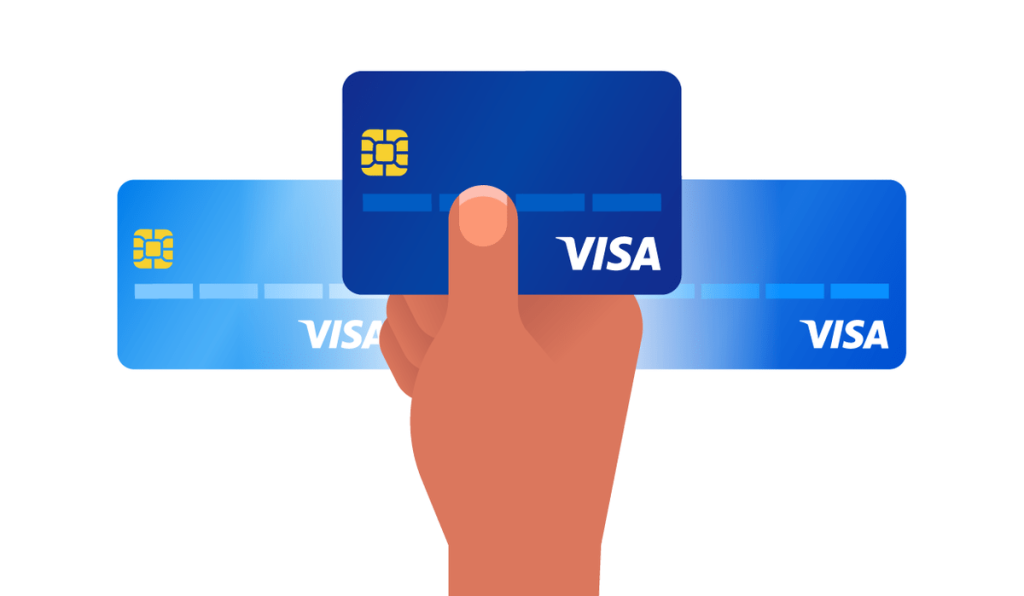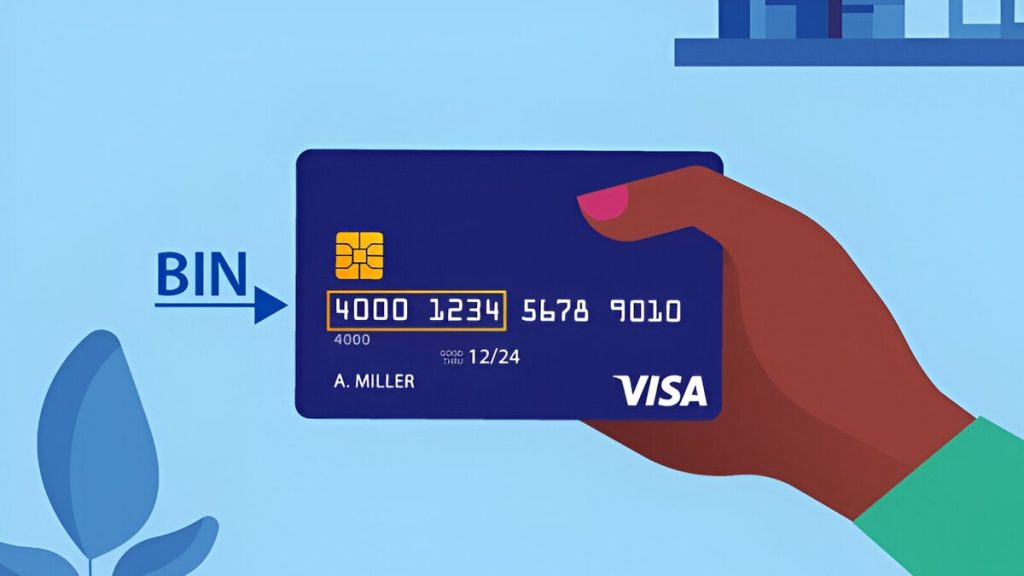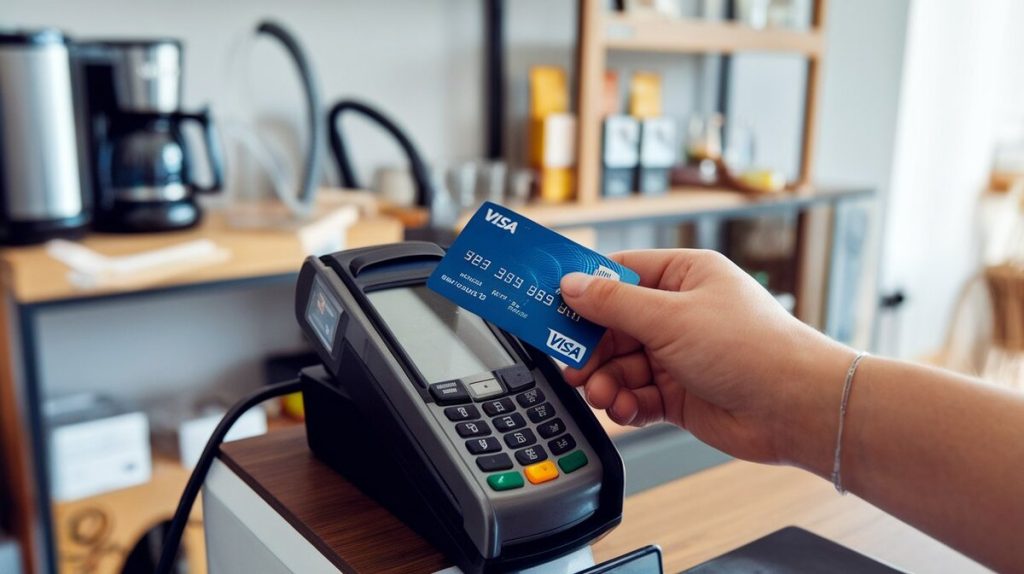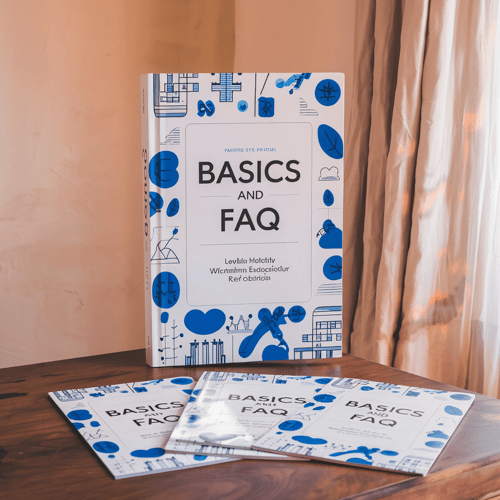The world of digital payments relies on Bank Identification Numbers (BIN) and Card Acceptor IDs (CAID) to ensure secure and efficient transaction processes. This article explains what BIN and CAID are, how they function, and their relevance for businesses, particularly in managing online payments. Understanding these identifiers can help businesses improve security, reduce chargebacks, and enhance operations.
What is a VISA BIN?
The Bank Identification Number (BIN) is the first 6 digits on a payment card and identifies the issuing bank, the card’s country of origin, and its type (credit, debit, prepaid). For Visa cards, all BINs start with the digit 4.
BINs are vital in routing transactions to the appropriate bank for approval, ensuring proper authorization.
Key BIN Information:
- Length: BINs are 6 digits and are moving toward 8 digits to meet new international standards.
- Regulation: The BIN system is regulated by the International Organization for Standardization (ISO 7812).
Table 1: BIN Ranges by Card Brand
| Card Brand | BIN Range |
|---|---|
| Visa | 400000 – 499999 |
| Mastercard | 510000 – 559999, 222100 – 272099 |
| American Express | 340000 – 379999 |
| Discover | 601100 – 601199 |
Each card brand’s BIN allows merchants to determine which bank will handle the transaction, whether it’s credit, debit, or prepaid, and where the funds will come from. This system helps speed up payments and allows for better risk management.
What is a CAID (Card Acceptor ID)?
The Card Acceptor ID (CAID) is a unique identifier assigned to merchants for tracking transactions at specific locations. CAID is different from a Merchant ID (MID), which identifies the business itself, while CAID pinpoints the location where a transaction occurs.
Key CAID Information:
- Length: Typically between 1 and 15 characters.
- Purpose: CAID helps track transaction locations, ensuring secure payments.
How BIN and CAID Work Together
BIN and CAID combine to provide comprehensive transaction data. BIN identifies the issuing bank, while CAID tracks where the transaction occurs. This allows for secure transaction routing, fast authorization, and fraud detection.

Why BINs and CAIDs Matter for Businesses
Understanding BIN and CAID is critical for businesses that process digital payments. These identifiers allow businesses to prevent fraud, process payments efficiently, and reduce chargebacks.
Fraud Prevention: BINs help identify fraud by comparing the cardholder’s location with the issuing bank’s details. For example, a mismatch between the BIN’s country of issuance and the customer’s location can be a red flag.
Payment Authorization: When combined with CAID, BIN helps ensure payments are authorized from the correct location, further enhancing security.
Operational Efficiency: BINs and CAIDs streamline the payment process by enabling quick routing of transactions to the appropriate banks and by linking the transactions to specific merchant locations.
Merchanto.org, a Visa and Mastercard partner, offers businesses tools for reducing chargebacks and improving transaction security. Their services, available at Merchanto.org, provide critical support for companies facing high chargeback rates.
The Role of BINs in Fraud Prevention
BINs are a key component in preventing payment fraud. When a customer initiates a transaction, the BIN provides essential information to merchants, including the bank’s location and card type. This allows merchants to verify whether the transaction details match the cardholder’s information.
Example of Fraud Detection with BIN:
- If a U.S. merchant processes a transaction but the card’s BIN is from a Russian bank, this could indicate a fraudulent transaction. Comparing the card’s BIN with the cardholder’s address can flag potential risks.
Table 2: Fraud Prevention Using BIN
| Cardholder Location | BIN Country | Risk Level |
|---|---|---|
| U.S. | U.S. | Low |
| U.S. | Russia | High |
| U.K. | U.S. | Medium |
Merchants can use this information to prevent fraud by rejecting transactions where there are suspicious mismatches.

How CAIDs Improve Transaction Tracking
CAID helps businesses manage and track payment transactions across different locations. For businesses with multiple outlets, having a unique CAID for each terminal ensures that every transaction is traceable back to the specific location where it occurred. This data is useful in resolving disputes and chargebacks.
Example: A company with several retail stores can use CAID to determine exactly which location processed a disputed transaction. This helps reduce the time and effort needed to resolve chargebacks.
BIN and CAID for Chargeback Management
Managing chargebacks is essential for businesses that process a high volume of online transactions. By leveraging BIN and CAID, companies can significantly reduce chargeback risks.
How BIN and CAID Help with Chargebacks:
- BIN Data: Identifies transactions from high-risk regions, allowing businesses to flag suspicious activities early on.
- CAID Data: Associates every transaction with a specific terminal or location, making it easier to verify transaction authenticity in the event of a dispute.
According to Visa’s guidelines, businesses that use BIN and CAID data effectively can reduce chargeback rates by up to 25%. This is especially important for businesses with high online transaction volumes.
Conclusion
BIN and CAID are critical components of the payment process. BINs identify the card’s issuing bank, while CAIDs track where transactions occur. Together, they enhance security, streamline payments, and reduce fraud.
For businesses, understanding and utilizing these identifiers can make a significant difference in how they handle payments and manage chargebacks. As payment technologies continue to evolve, leveraging BIN and CAID data will become even more important for maintaining secure, efficient, and compliant operations.
Future-proofing Payment Processes: The shift toward 8-digit BINs will allow even greater security and efficiency as businesses move to adopt this new standard.
Table 3: Summary of BIN and CAID Features
| Feature | BIN | CAID |
|---|---|---|
| Purpose | Identifies the issuing bank | Identifies the transaction location |
| Length | 6-8 digits | 1-15 characters |
| Usage | Payment processing, fraud detection | Tracking, dispute resolution |
| Regulated by | ISO 7812, Visa, Mastercard | Visa, Mastercard |
| Importance | Fraud prevention, transaction authorization | Chargeback management, tracking |
By integrating BIN and CAID data into their payment processes, businesses can expect faster processing times, lower chargeback rates, and improved fraud detection capabilities. These tools are crucial for optimizing modern payment operations and safeguarding against fraud.



